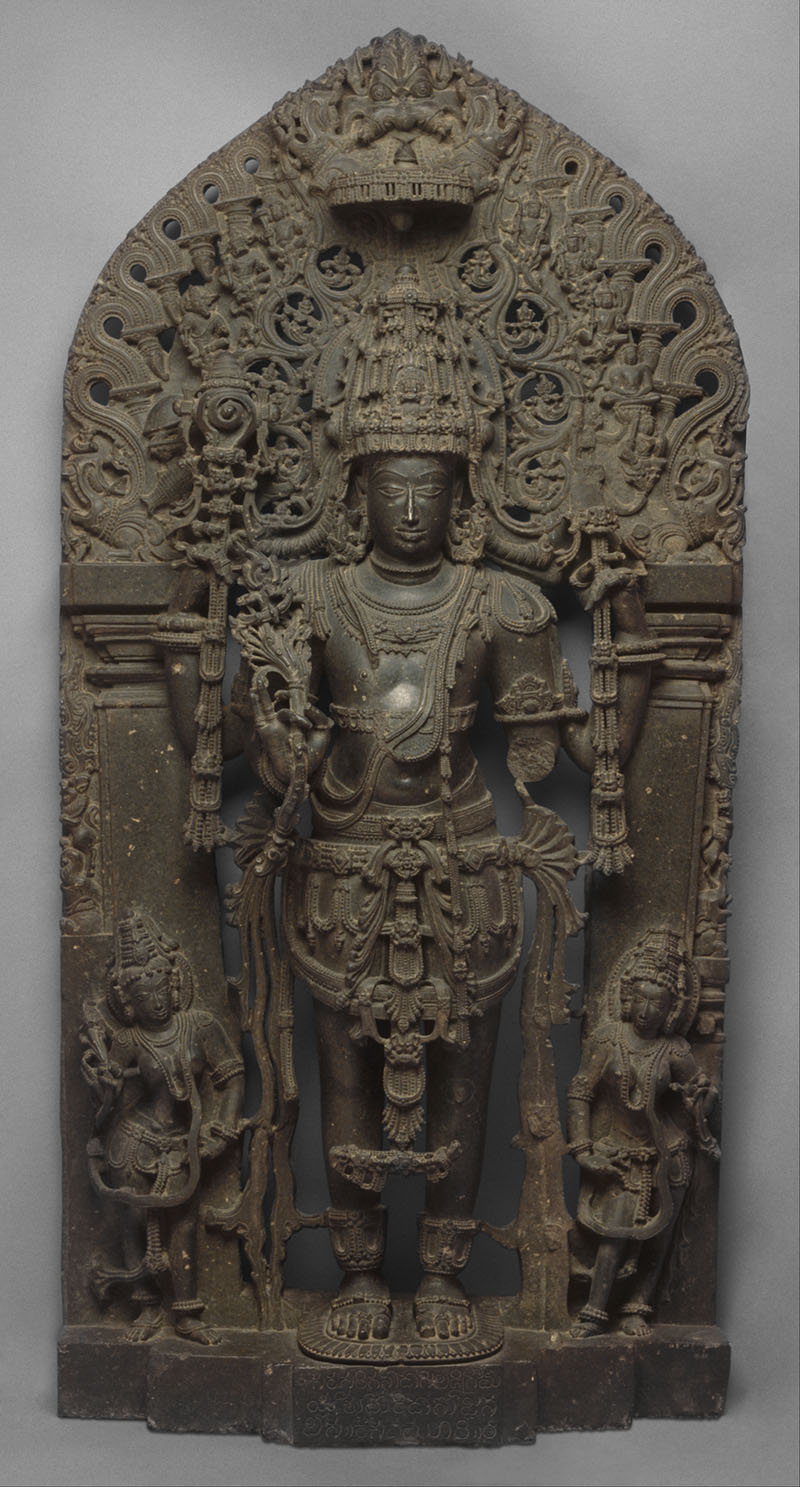A master sculptor who was active in Karnataka, India, between the last quarter of the eleventh century and the first half of the twelfth century, Dasoja is known for working on a number of temples built under Hoysala rule, most notably the Chennakeshava temple, Belur. Dasoja and his son Chavana were among several master artisans who worked on Hoysala temples, identified by their inscribed signatures on the works.
Little is known about Dasoja’s birth or early life. However, one of the epithets in his inscriptions — Balligaveya ruvari Dasoja (meaning “the sculptor from Balligavi, Dasoja”) — indicates that he hailed from the village of Balligavi in Shivamogga district, central Karnataka. Balligavi was an important cultural centre under Western Chalukya rule, along with Lokkigundi, Gadaga and Banavase. Dasoja and Chavana may have migrated to Balligavi along with other groups of artisans as Hoysala rulers began commissioning temples in the region.
A Jain epigraph attributed to Dasoja and dated to the second half of the eleventh century suggests that he was an engraver in addition to a sculptor. Some works attributed to him include images of Achyuta and Keshava — both epithets of Vishnu — at Balligavi and Hirekerur, respectively, as well as a sculpture of Keshava bearing Dasoja’s signature and dated to the early twelfth century, which may have originated in Kikkeri, near Mandya in Karnataka, and is currently in the collection of the Metropolitan Museum of Art, New York.
Dasoja signed his work with epithets such as Sarasvatiganadasi (“Servants of Sarasvati,” which may have been a guild) and Birudaruvari Gandalabadiva (“From a crowd of titled sculptors”). Works attributed to Dasoja at the Chennakeshava temple, Belur, identifiable by their inscriptions, include madanika bracket figures on the exterior and interior of the temple mandapa, a Durga image and a Bhairavi image. At the Hoysaleswara temple, Halebidu, only one image contains an inscription by Dasoja, but this inscription varies from those at Belur and other sites. However, given the chronological overlap between the two sites, it is likely that they are the work of the same artist. Another inscription naming Dasoja was found at the Chandragupta Basadi, Shravanabelagola. However, scholars suggest that is likely to have been referring to another artist by the same name.
Dasoja was active until the mid-twelfth century, with the last work attributed to him being the engraving of an inscription to build a temple at Arasikere, near Halebeedu, dated to 1152.







